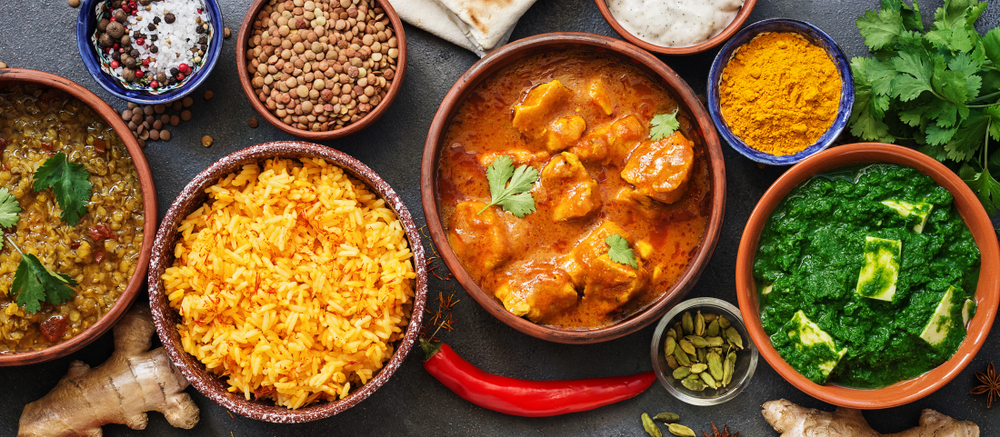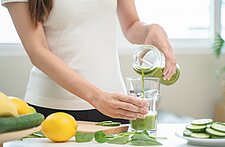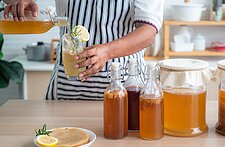A chaotic 2020 has elevated the importance of physical and mental wellness, leading consumers to seek out foods and beverages that promote their overall health above all else. This has sparked a renewed interest in Ayurveda – the belief that health and wellness depend on a delicate balance between the mind, body, and spirit – and its holistic diet.
Hungry for more trends? Join the In-sight Community, CLICK HERE!
Chefs are finding new ways to incorporate Ayurvedic ingredients into their food and beverage menus as interest in plant-based alternatives and wellness ingredients prevalent in this ancient practice grows. We spoke with Chef Divya Alter of Divya’s Kitchen in NYC, to get her insights into the rise of healthy lifestyles, the resurgence of Ayurvedic medicine, and the ingredients she incorporates in her own menu that she is sure to start trending as part of our Healthy Lifestyle Initiative.
HEALTHY REPLACEMENTS
The Healthy Lifestyle movement is bringing back popularity of ingredients, recipes, and techniques that were commonplace in past centuries. As we have seen as part of the Back to the Future platform within our Healthy Lifestyle initiative, people are seeking products that represent a return to nature with a focus on pure, sustainable products and natural ingredients that have survived many generations. North Americans, especially travel-hungry Millennials and Gen Zs, are also intrigued by the foods and traditions that have stood the test of time of other countries and the benefits tied to them. Following this trend of international interest, Ayurvedic spices and seeds are growing in popularity for their ancient health benefits, such as turmeric, cloves, anise, fenugreek, asafetida, cinnamon, and peppermint. These, among ingredients like ginseng and ginger, are found in some trending Ayurveda-inspired drinks like golden milk, kefir, kombucha, and moon milk, a soothing blend of milk and spices, which is a natural remedy for relieving stress.
“People are looking into healthier ways to eat, for sure,” said Alter. “And Ayurveda, when presented properly, especially the Ayurvedic way of eating, it just makes so much sense … eating according to your digestive strength.”
Along with being a successful chef and restaurant owner, Alter is a healer and practitioner of Ayurvedic medicine, an ancient healing practice that helps cure digestive and other health issues. She is a certified nutritional consultant and culinary educator who has taught thousands of people at her cooking school. Her restaurant, Divya’s Kitchen, is the only completely Ayurvedic kitchen in New York. The restaurant also runs a meal delivery service.
The boom of plant-based options is reviving the category as consumers seek out better-for-you alternatives. There are many more nutritious alternatives to pantry staples that Alter uses as part of the Ayurvedic diet to avoid additives or harmful ingredients in her dishes.
"We use taro root,” said Alter. “It’s much more nutritious than a normal potato. We don’t cook with nightshades like potato and garlic. Taro root has a binding quality and binds toxins in the body. It also gives creaminess, so we use it in our vegetable curries and a creamy vegetable soup.”
RELATED: Food and Drink Focused on Modern Functional Nutrition & Wellness
Consumers are paying more attention than ever to the ingredients of their food and beverage choices and choosing ingredients and packaged goods based on the benefits they bring to their daily life as alternative medicine choices. They’re seeking an approach to health that tackles long-term prevention and preservation of key functions.
According to Alter, some Ayurvedic ingredient options with “tremendous medicinal properties” that she hopes to see gain in popularity include split kulthi beans for savory dishes, which help de-calcify build-up in the joints and arteries, break down kidney stones and gallstones, and dissolve tumors; curry leaves as a detoxifying herb; lauki squash (bottle gourd) used all over Asia and in Chinese cooking that promotes healing for the liver; and gut-friendly ghee.
“Ghee is becoming more and more popular because nutritionists and scientists are starting to talk about how ghee is the highest food source of butyric acid, which is so important for healing the gut and feeding the friendly bacteria in the gut. Hopefully it will become more popular,” said Alter.
DECADENCE WITHOUT GUILT
Those seeking a healthier lifestyle are also looking for alternatives to processed sugar and leveraging natural syrups and sugars to satisfy sweet tooths. For the vegan crème caramel dish at Divya’s Kitchen, Alter uses a syrup extracted from the roots of the yacon plant to make her dessert permissibly decadent.
“What excites me about [this dish] is it’s sweetened with yacon syrup which is actually a low-glycemic sweetener,” said Alter. “It’s very sweet, but it has this caramel taste and flavor. I like using it also as a sweetener in general because of its wonderful flavor, and it's low glycemic, which means it doesn't spike your blood sugar.”
Alter uses Ayurvedic alternatives in her desserts to not only keep sugar levels at a healthy range but also to replace ingredients that once made it difficult to create plant-based or vegan alternatives to sweet treats.
“One plant-based ingredient that I use that I hope will become more popular, especially with desserts, is Irish moss,” said Alter. “We use the raw version of it. It’s like a vegan gelatin; it has this coagulating, binding attribute. We use it as a thickener and use it in our chocolate mousse.”
There is also a creamy vegan milkshake made with fresh almond milk, dates, and cardamom, and other delicious dishes on Alter’s innovative menu that sticks to Ayurveda principles with offerings appealing to the health-conscious, food-loving consumer.
Image courtesy of Instagram (@divyaskitchennyc).






